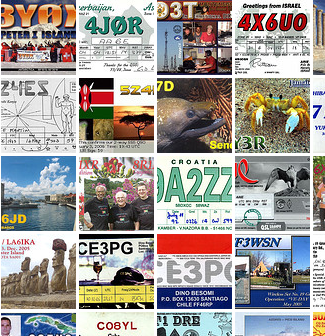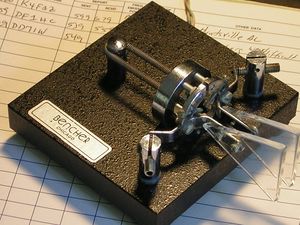 Amateur radio (or "ham" radio) is a non-commercial hobby that encourages radio communications and experimentation. Ham operators are licensed by the U.S. Federal Communications Commission or the equivalent authorities in other countries. Historically, amateur radio has attracted technically-inclined people who are interested in building and operating radio receivers, transmitters, and antennas. Today, excellent equipment is available commercially at attractive prices, so hams rarely build their own basic receivers and transmitters. Many interesting technical frontiers remain to be explored, including for example, computer-based radio signaling methods, satellite communications, and new antenna designs.
Amateur radio (or "ham" radio) is a non-commercial hobby that encourages radio communications and experimentation. Ham operators are licensed by the U.S. Federal Communications Commission or the equivalent authorities in other countries. Historically, amateur radio has attracted technically-inclined people who are interested in building and operating radio receivers, transmitters, and antennas. Today, excellent equipment is available commercially at attractive prices, so hams rarely build their own basic receivers and transmitters. Many interesting technical frontiers remain to be explored, including for example, computer-based radio signaling methods, satellite communications, and new antenna designs.
Ham radio operations is the most interesting aspect for many. You can compete to work the most geographical areas ("DX" - long distance), you can help out in emergency and public-service communications, you can operate "mobile" from your car, boat, or airplane. There are many other special operating niches.
Amateur radio has a grand tradition from the 1910's onward, but the proliferation of computers, internet technology, cheap long-distance, and the cell phone have fundamentally changed the environment for the hobby. Many of the younger "would-be's" won't be, because of all the alternative outlets.
Still, there are over 600,000 licensed ham radio operators in the U.S., and active organizations like the American Radio Relay League (ARRL), supporting everything from old-fashioned "rag-chewing", to data transmission, to moon-bounce and satellite based communication, and beyond.
What about QSL Cards?

"QSL" is one of the "Q signals", part of an international set of radio communication codes. It means "I acknowledge receipt". There are many Q signals, which help amateurs communicate quickly in a language-neutral manner.
QSL cards are traditionally exchanged after a meaningful "QSO" (radio contact). QSLs are collectible in their own right, but they also serve as proof of contact. This is useful when applying for special awards, such as "Worked All States" or "DXCC" (worked 100 or more countries). Sometimes, "SWLs" (shortwave listeners) will send a card confirming reception of a QSO in progress between two amateurs. Wikipedia:QSL.
For some versions of my own card, see my QSL information.
For a book about a particular collection of QSL cards, see "Hello World", written by Danny Gregory and Paul Sahre, published 2003 by Princeton Architectural Press. (Amazon)
In recent years, all-electronic substitutes or supplements for traditional QSL cards have developed. The leading services are | eQSL.cc and ARRL's "Logbook of the World". They have different goals and styles. eQSL maintains the idea of a QSL card image, which is stored and transmitted over the Web. "LOTW" focuses on hams' logbooks which are compiled into a central database and cross-matched for the purpose of scoring contests and verifying certificates, such as DXCC.
CW (Continuous Wave Telegraphy)

Morse Code is the ancient method of telecommunication which is still a required skill for some types of ham radio licenses. It is diminishing as a legal requirement in the U.S., and probably will disappear in the coming years. Still, many radio amateurs have a strong attachment to using Morse, because of the tradition, because of the special skills required, and because of the efficiency of communications. Morse is generally sent as CW, continuous wave, on-off carrier modulation. CW will "get through" when most other modes fail, because of its spectral efficiency. CW concentrates transmitted power in a very narrow bandwidth allowing it to overcome noise and poor radio propagation. CW transmitters and receivers can be very simple and inexpensive.
At the right is a photo of my Bencher Paddle, which is a classic but low-cost design for the "iambic" design -- two independent paddle switches for dashes (left) and dots (right). The paddle must be connected to an electronic keyer which actually generates the dots and dashes. Click on images for full resolution.
Further Reading
- The American Radio Relay League (ARRL) "The National Association for Amateur Radio" is the central organization for U.S. hams. It has published the journal QST since 1915, along with other periodicals and numerous books.
- The ARRL Handbook for Radio Communications has been published in many editions over the years. Written in an approachable style, it remains one of the most comprehensive sources for information related to Amateur Radio.
- Wikipedia article on Amateur Radio.
